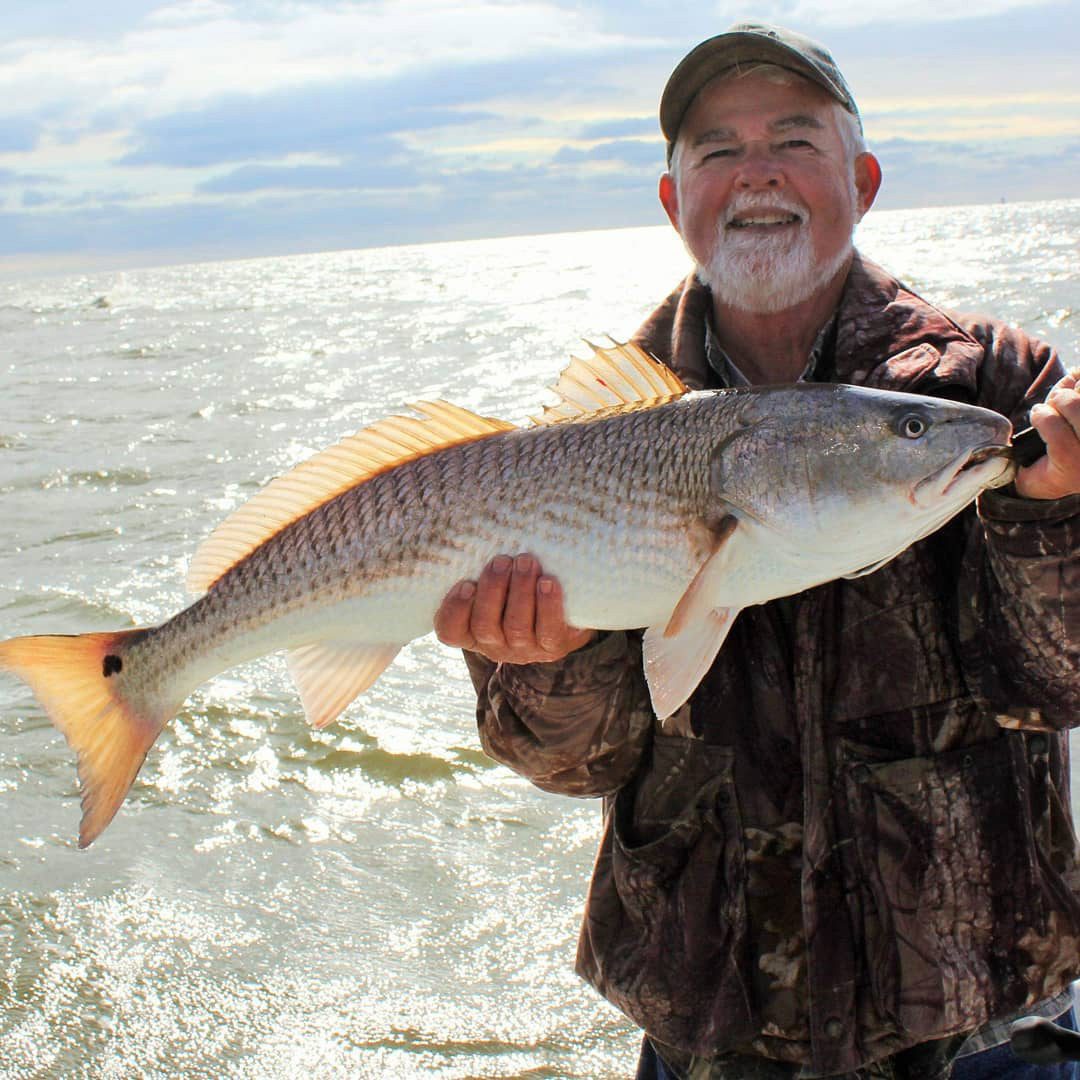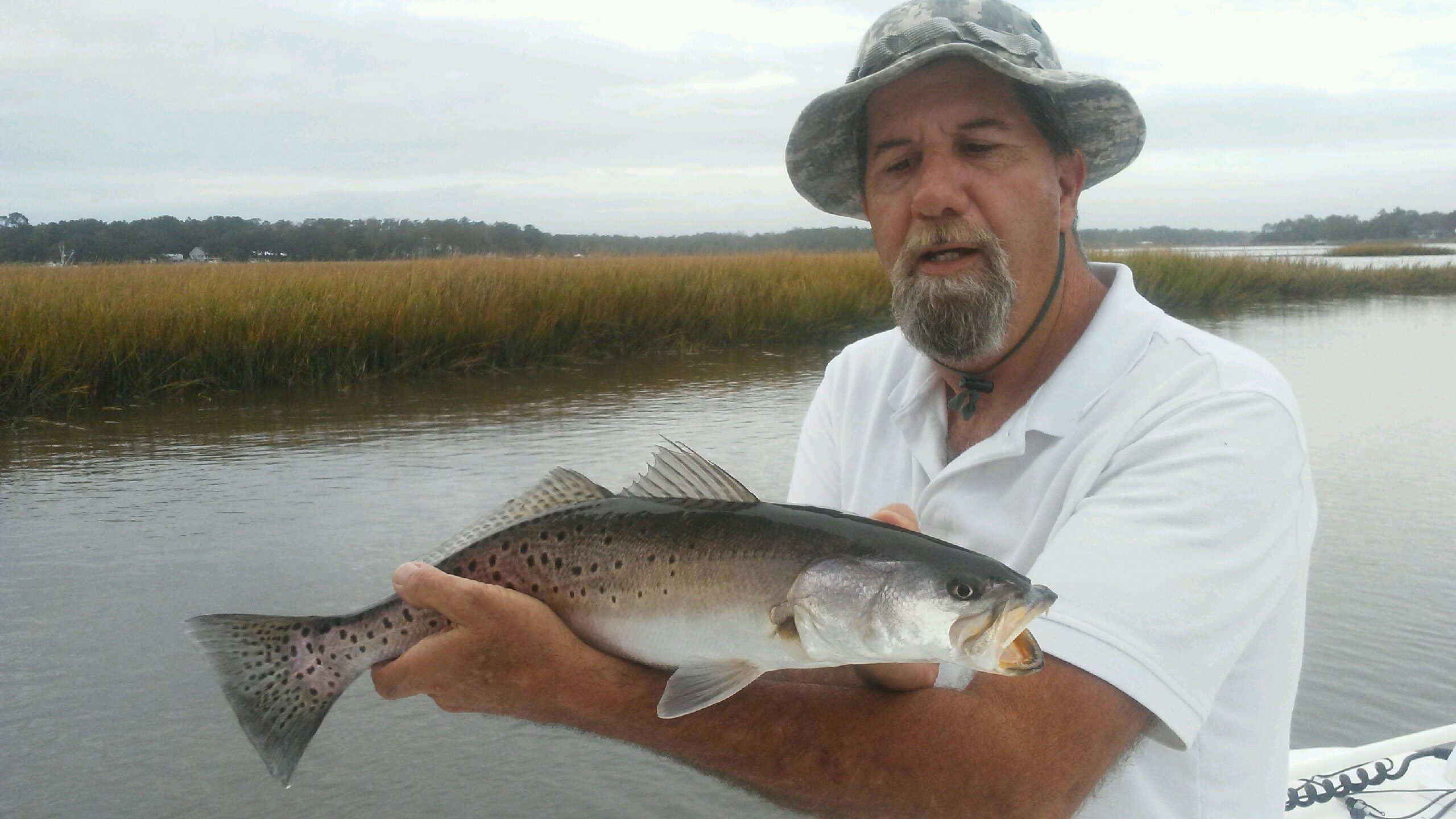North Myrtle Beach/Little River – December 13, 2018
Patrick, of Captain Smiley Fishing Charters, reports that a lot of small trout are still coming in from a variety of places, though ledges in about 10’ of water have been the most productive. Tide stages don’t seem to matter as long as there is a lot of moving water. Gulp and Vudu shrimp are the top baits, with white and chartreuse proving to be the best colors.
This trout action should remain the case throughout the winter months.
While it’s late in the season, some flounder have been picked up along with the trout, but expect the flounder bite to die off altogether until the spring.
Redfish and black drum have both been biting, and fishing with fresh cut shrimp around docks near shell bottoms has been effective for both. The best bite has been on the incoming tide in 3-8’ of water, and it should remain that way all through the winter.
From December through mid-March, you can also expect to find plenty of redfish in the shallows, where anglers should be ready to fish stealthy. Gulp shrimp rigged weedless and jerk shads often produce winter action.

Doug McDowell showing off an over-slot red that fell for a live bait on the bottom while he was fishing with Capt. Bevan Hunter, of Chilly Water Fishing Charters.
Ken, of Fin and Feather Light Tackle Fishing Charters, reports that 50-60 fish days are not out of the realm of possibility when it comes to speckled trout. Most of the fish have been between 13.5-16”, but there are quite a few 17-22” fish in the mix as well. The best place to look has been the jetty rocks on low water.
Start off with artificials, such as chartreuse DOA shrimp or Trout Tricks, and let them sink all the way to the bottom to find the biggest fish. Then switch to live shrimp on slip-float corks when you start getting bites. As the tide comes in, follow the water into the creeks and fish grassy banks and points with a strong current.
In the coming months, the bigger trout will be moving into the residential canals, where Mood Ring-colored Trout Tricks and pink or natural-colored Vudu shrimp will be the favored baits.
Flounder have been found here and there, with redfish in the mix as well. As the water continues to cool in the coming months, the redfish will bunch up and move into shallow water in the backs of creeks. Using Gulp or Vudu shrimp with Pro-Cure on an 1/8 oz. jig head should produce bites.
Stripers anywhere from 4-15 lbs. will be around structure in the ICW, where Rat-L traps of any kind, crank baits, and soft plastics will all draw attention.
Keith, of Low Country Fishing Charters, reports that good numbers of speckled trout are still being caught. Most of the trout are in the 13-15” range, though keepers in the 18-20” range are becoming more common. Artificial baits are the most popular, especially DOA shrimp in chartreuse. Working the bait slow has been the ticket. When available, live shrimp under popping corks has been effective. The fish are scattered throughout the ICW and backwater creeks near the inlets.
Some slot redfish and a few flounder have also been biting when targeting the trout, with the reds preferring the live shrimp over the artificials. Sheepshead are still biting fiddler crabs on the jetties.
Over the next few months, expect the trout and red drum bite to remain strong. You will be able to best find the reds in estuary creeks.

Keith Huddleston displaying a keeper trout he landed while fishing in the Shallotte River. The trout was enticed by a Yo-Zuri shrimp.
Bob, of Strange Magic Fishing Charters, reports that the trout bite has been great. Plenty of big fish are coming in, though the majority of fish continue to be small (in the 12-15” range). Most of the action has been in the ICW on shell banks transitioning to grass, as well as creek and drain openings. The tide doesn’t seem to be as much of a factor since the fish are so hungry, but having deep water retreats nearby is always a plus. White and chartreuse Gulp baits on 1/8 to 1/4 oz. jig heads will put fish in the boat, as will MirrOlures.
If the area sees a mild winter, the trout bite should stay strong, especially with the big numbers of fish that have been around.
Black and red drum have been in the mix as well, though they will strike fresh shrimp and mud minnows in addition to the Gulp baits. While many of the drum have been swimming alongside the trout, you can also find plenty around docks, especially those with nearby creeks, drains, isolated structures, or shell/barnacle growth.
As water temperatures drop into the lower 50s, the reds will hunker down in smaller groups and move from the docks into the backs of the creeks and flats. Be as stealthy as possible with trolling motors and push poles, and remember that if you scare a school out of an area, there is a good chance they will return after a short wait, so be patient.
The black drum will remain around the docks, though they will start biting in smaller numbers. If you fish an area for 15-20 minutes without success, move on.
The flounder bite has died down. The occasional fish is still being caught, though for the most part the fish have left their late fall haunts and moved out into the ocean. The flounder should start to return in late March to early April, depending on water temperatures.
Steve, of Cherry Grove Pier, reports that water temperatures are still in the high 50s, and a good number of whiting, croaker, lots of small black drum, and a handful of speckled trout are all biting. Shrimp has been the number one bait.
The winter months should see whiting, croaker, perch, black drum, and the possibility of spadefish. All the bigger fish will be going dormant until the end of February.





